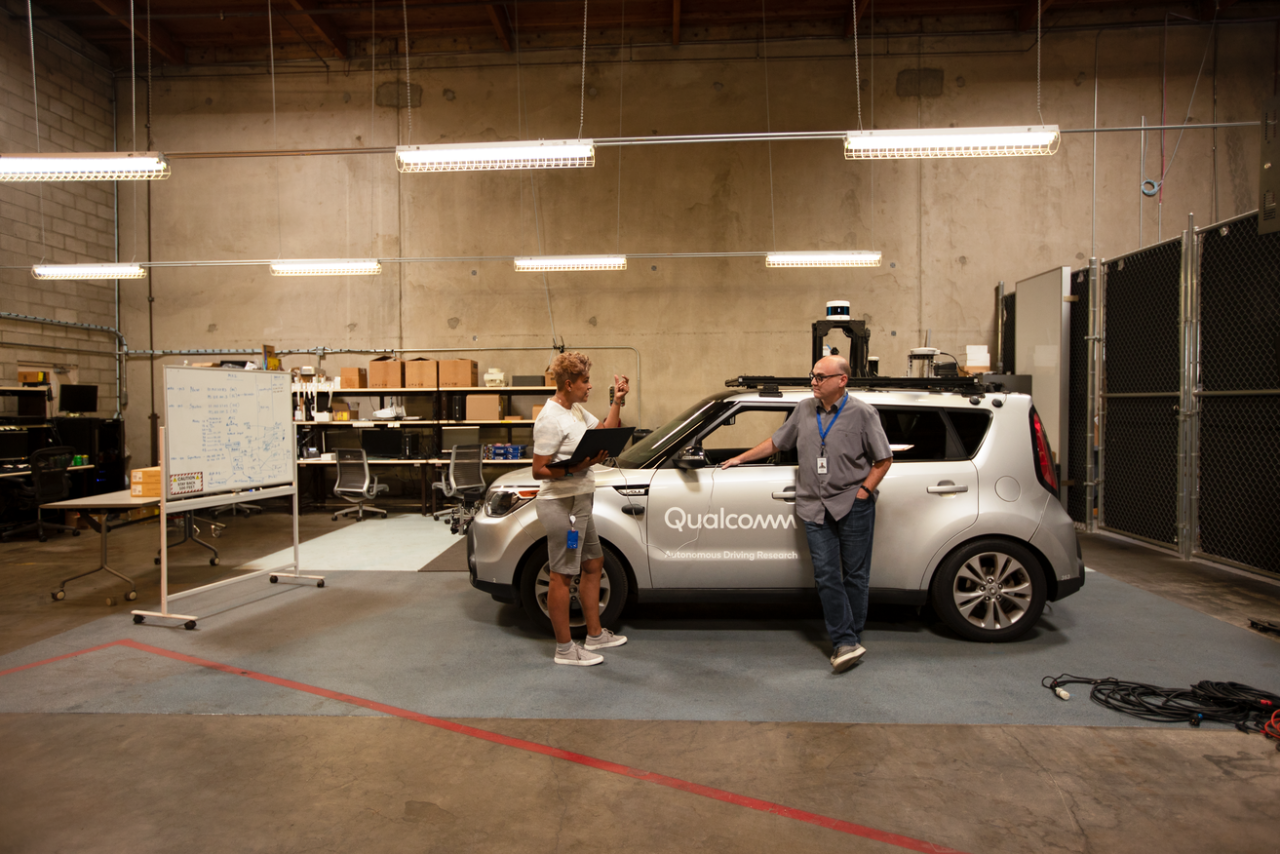Smart Transportation
Published 02-10-22
Submitted by Qualcomm Inc.

Designed specifically for transportation, Qualcomm® Cellular Vehicle-to-Everything (C-V2X) solutions, which include vehicle-to-vehicle (V2V), vehicle-toinfrastructure (V2I), vehicle-to-pedestrian (V2P) and vehicle-to-network (V2N) communication, can complement use of 5G networks and provide short-range connectivity for low-latency, safetycritical and mobility-benefiting applications. Together, these communications technologies can reshape the transportation sector by decreasing road incidents for safer travel and improving traffic efficiency for lower greenhouse gas emissions.
Many within the automotive industry believe that the widespread use of C-V2X could potentially save thousands of lives and prevent hundreds of thousands of collisions every year by supporting safety applications for drivers, pedestrians, cyclists and roadway workers. For example, Red Light Violation Warnings (RLWV) that notify drivers when their vehicle is likely to run a red light have been shown to reduce fatalities and injuries on urban roads by 3.8% and 7.0%, respectively.1
Additionally, crashes and other non-recurring incidents account for about half the congestion problem in some parts of the world. Hence, there is a direct line between safety and sustainability.
Once vehicles are connected to everything around them, transportation systems may be able to support new services that could help improve trip planning, mode choices and traffic efficiency – enhancements that can lower emissions and reduce fuel consumption, for example:
- Dynamic route planning for better decision making in situations where traffic congestion can be avoided
- Real-time sharing of local data between infrastructure and vehicles (for instance, HD maps) to improve traffic flow and parking for a more efficient journey
- Smart traffic management systems that use sensor data and modeling to manage real-world traffic and mitigate congestion
- Sensor data sharing between vehicles and the infrastructure for more predictable and coordinated driving while enhancing road safety
Making cities and regions more sustainable will take more than just smarter, more efficient transportation systems, it will also require connected mobility solutions that support more informed, personalized travel options. Whether it’s a business operating freight trucks during off-peak hours or an individual choosing an alternate route to shorten travel times, services that come from connected, digitized transportation systems can inform better choices that can lead to even greater reductions in emissions and energy usage. In an environment where all road users and traffic management systems are connected, every use case that helps to improve efficiency is an incremental step toward a more sustainable future.
Learn more in Qualcomm's 2021 Corporate Responsibility Report
9 Support study for impact assessment of cooperative intelligent transport systems


